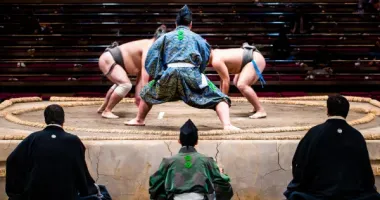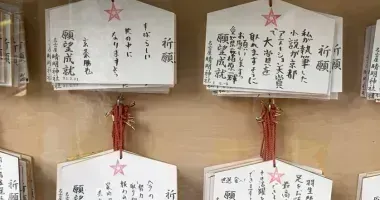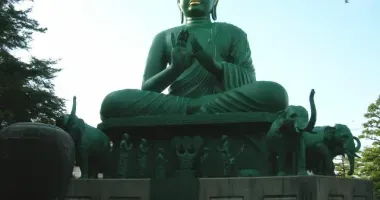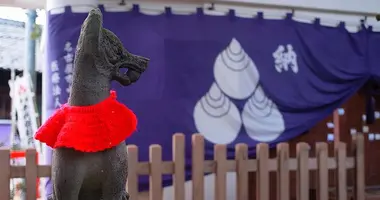Nagoya Temples & Shrines
- Published on : 04/07/2024
- by : Japan Experience
- Youtube
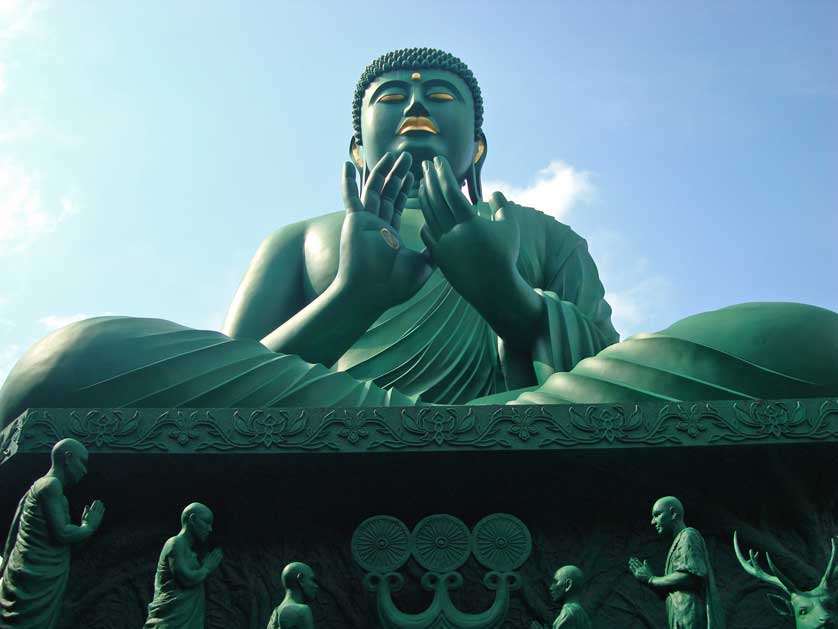
Toganji Temple, Nagoya
Nagoya, a city steeped in rich cultural heritage, is home to numerous temples and shrines that offer visitors a glimpse into Japan's spiritual traditions. From ancient Shinto shrines to serene Buddhist temples, Nagoya's religious sites are not only places of worship but also architectural marvels and repositories of history. While they may not match the grandeur of those in Nara or Kyoto, Nagoya's temples and shrines possess their own unique charm and significance. This comprehensive guide will take you through the major temples and shrines in Nagoya, highlighting their historical importance, architectural features, and cultural significance.
Introduction to temples and shrines in Nagoya
Nagoya's religious landscape is a testament to the city's rich history and cultural heritage. The city boasts a diverse array of Buddhist temples and Shinto shrines, each with its own unique story and significance. These sacred sites not only serve as places of worship but also as guardians of traditional art, architecture, and historical artifacts.
While temples and shrines may seem similar to the untrained eye, they serve different purposes in Japanese religious life. Shinto shrines (jinja) are dedicated to indigenous Japanese deities, while Buddhist temples (otera) house Buddhist images and artifacts. In Nagoya, you'll find both types of religious structures, often coexisting harmoniously.
Many of Nagoya's temples and shrines have survived centuries of history, including wars, natural disasters, and urban development. They stand as testaments to the resilience of Japanese culture and spirituality. Visitors to these sites can experience a sense of tranquility and connection to Japan's rich spiritual traditions, even in the midst of Nagoya's modern urban landscape.
As you explore Nagoya's temples and shrines, you'll notice distinct architectural features that set them apart. Shinto shrines are typically characterized by their torii gates, while Buddhist temples often feature elaborate gates called sanmon. Both types of structures showcase intricate woodwork, beautiful gardens, and unique artistic elements that reflect their respective traditions.
Major Shinto shrines in Nagoya
Atsuta Shrine
Atsuta Shrine, known as Atsuta Jingu, is one of the most important Shinto shrines in Japan. Founded nearly 2,000 years ago, it predates the city of Nagoya by over a millennium. The shrine is dedicated to the sun goddess Amaterasu and houses the sacred sword Kusanagi, one of the three imperial regalia of Japan.
Key features of Atsuta Shrine include:
- The main shrine building, rebuilt in the Meiji period in the Shinmei-zukuri architectural style
- Extensive forested grounds covering about 200,000 square meters
- The Nobunaga Wall, donated by the famous warlord Oda Nobunaga
- A treasure hall housing numerous important cultural artifacts
Atsuta Shrine attracts millions of visitors each year, especially during New Year celebrations and the annual Atsuta Festival in June. The shrine's serene atmosphere and historical significance make it a must-visit destination for those interested in Japanese spirituality and culture.
Toyokuni Shrine
Toyokuni Shrine in Nagoya is dedicated to Toyotomi Hideyoshi, one of Japan's most influential historical figures. Built in 1885, the shrine stands on the believed birthplace of Hideyoshi in Nakamura Park. It's one of several shrines across Japan honoring this great unifier of the nation.
Notable aspects of Toyokuni Shrine include:
- A peaceful setting within Nakamura Park, featuring traditional Japanese landscaping
- Architecture that reflects the Azuchi-Momoyama period style
- Enshrined spirits of both Hideyoshi and his loyal general, Kato Kiyomasa
- Regular festivals and events celebrating Hideyoshi's legacy
Visiting Toyokuni Shrine offers a unique opportunity to connect with an important chapter of Japanese history while enjoying the tranquility of its park setting. The shrine serves as a reminder of Nagoya's significant role in shaping Japan's political landscape during the feudal era.
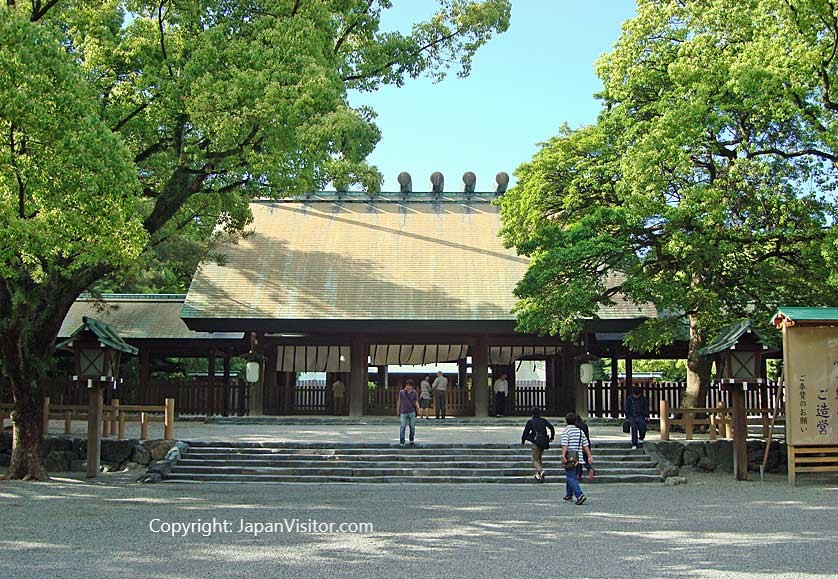
Atsuta Shrine, Nagoya, Aichi Prefecture
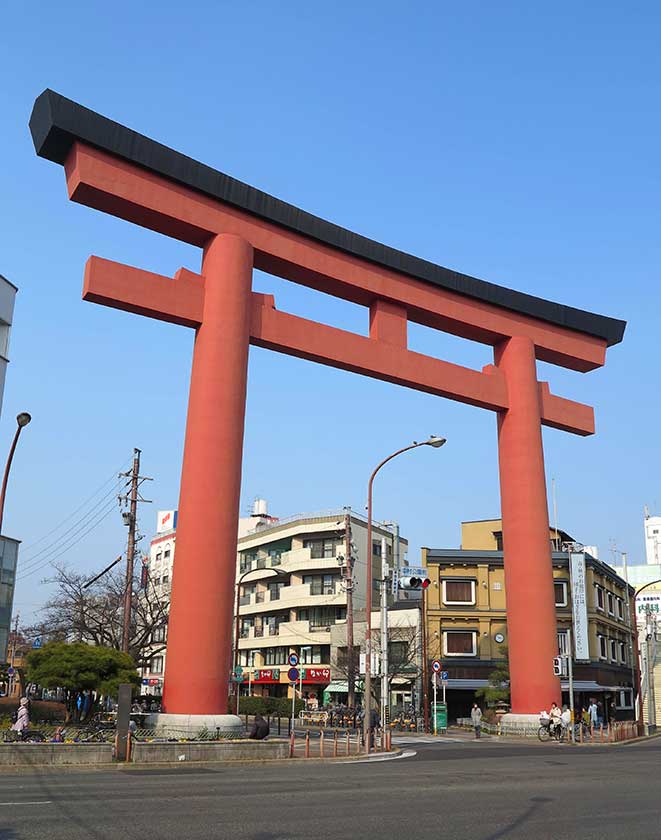
Toyokuni Shrine, Nakamura Koen, Nagoya
Significant Buddhist temples in Nagoya
Osu Kannon Temple
Osu Kannon Temple is one of Nagoya's most famous and popular Buddhist temples. Originally built in 1333 in Gifu Prefecture, it was moved to its current location in 1612 by Tokugawa Ieyasu. The temple is dedicated to Kannon, the Buddhist goddess of mercy.
Key features of Osu Kannon Temple include:
- A striking vermilion-colored main hall, rebuilt in the 1970s
- A wooden statue of Kannon believed to be carved by the Buddhist monk Kobo Daishi
- The Shinpukuji Library, housing over 15,000 classical Japanese and Chinese texts
- A popular flea market held on the 18th and 28th of each month
Osu Kannon Temple is not just a religious site but also a cultural hub, surrounded by the vibrant Osu Shopping District. Its blend of spiritual significance and modern urban culture makes it a unique destination in Nagoya.
Koshoji Temple
Koshoji Temple is a Shingon Buddhist temple located in the Yagoto area of Nagoya. It's renowned for having the only wooden five-story pagoda in the Tokai region, built in 1808. The temple grounds span two hills, Nishiyama and Higashiyama, offering a serene escape from the city bustle.
Notable aspects of Koshoji Temple include:
- The impressive 30-meter tall wooden pagoda
- A main hall dating from 1750, enshrining an image of Amida Nyorai
- A special shrine where visitors can pray for a peaceful death
- A beautiful modern Japanese garden in the rear of the temple complex
Koshoji Temple provides visitors with a glimpse into traditional Japanese Buddhist architecture and practices. Its pagoda and garden make it a particularly photogenic spot in Nagoya.
Nittaiji Temple
Nittaiji Temple, also known as the Japan-Thai Friendship Temple, is a unique Buddhist temple in Nagoya. Founded in 1904, it's the only temple in Japan that doesn't belong to a specific Buddhist sect. The temple was established to house a portion of the ashes of the Buddha, gifted to Japan by the King of Thailand.
Key features of Nittaiji Temple include:
- A distinctive architectural style blending Japanese and Thai elements
- A five-story pagoda and a large Dharma hall
- The Hoanto, a Gandhara-style structure housing Buddha's ashes
- A popular morning market held on the 21st of each month
Nittaiji Temple stands as a symbol of international friendship and cultural exchange, offering visitors a unique perspective on Buddhist traditions beyond Japan's borders.
Toganji Temple
Toganji Temple is a Soto Zen Buddhist temple known for its unique blend of Japanese and Indian influences. Dating back to the 16th century, it features an impressive 15-meter high statue of the seated Buddha painted in vivid green.
Notable aspects of Toganji Temple include:
- The large green Buddha statue, a striking visual centerpiece
- A Shiva-Lingam and a shrine dedicated to the Hindu goddess Saraswati
- A huge wood block said to purge past sins when touched
- Lovely temple grounds featuring a Chinese-style gate and a bamboo grove
Toganji Temple offers a unique spiritual experience, blending elements of Japanese Buddhism with influences from India. Its eclectic mix of religious symbols and peaceful grounds make it a fascinating stop for those interested in comparative religion and spirituality.
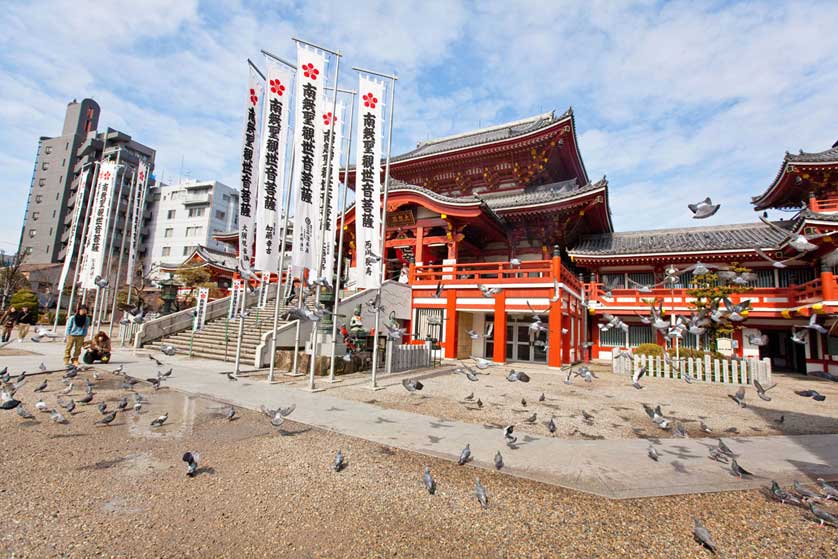
Osu Kannon Temple

Koshoji Temple's five story pagoda dates from 1808
Historical temples and shrines
Banshoji Temple
Banshoji Temple is a Soto Zen Buddhist temple with deep historical roots in Nagoya. Originally constructed in 1540 by Oda Nobuhide, father of the famous warlord Oda Nobunaga, it was moved to its current location in 1610. The temple played a significant role in Nagoya's early history and development.
Key features of Banshoji Temple include:
- A modern building housing the temple, reflecting its reconstruction after World War II
- Historical connections to the Oda clan and the construction of Nagoya Castle
- A popular spot for locals to pray for good fortune
- Its location in the bustling Osu shopping district
Banshoji Temple offers visitors a unique blend of historical significance and modern urban culture. Its story is closely intertwined with the founding and growth of Nagoya as a major city.
Higashi Betsuin Temple
Higashi Betsuin Temple is a large sub-temple of the Higashi Honganji Temple in Kyoto. It belongs to the Jodo Shinshu sect of Buddhism, which has the largest number of followers in Japan. The temple's grounds were originally the site of Furuwatari Castle, built in 1542.
Notable aspects of Higashi Betsuin Temple include:
- Spacious and tranquil grounds in the heart of Nagoya
- A massive main gate and main hall rebuilt in the 1960s
- An original bell dating back to 1692
- Regular services and events for followers of Jodo Shinshu Buddhism
Higashi Betsuin Temple provides a peaceful retreat in an otherwise busy area of Nagoya. Its historical significance and architectural beauty make it an important part of Nagoya's religious landscape.
Arako Kannon Temple
Arako Kannon Temple, also known as Jokai-san Enryu-in Kannon-ji, is home to the oldest wooden structure in Nagoya. The temple's two-story Tahoto Pagoda dates back to the Azuchi-Momoyama Period and was rebuilt in 1536.
Key features of Arako Kannon Temple include:
- The historic Tahoto Pagoda, a rare surviving example of medieval Japanese architecture
- An impressive main gate (Sanmon) with 3-meter-tall nio guardian statues
- Dedicated to Kannon, the Goddess of Mercy
- One of the four famous Kannon temples in the Owari region
Arako Kannon Temple offers visitors a glimpse into Japan's architectural past and Buddhist traditions. Its well-preserved structures make it a valuable site for those interested in historical Japanese architecture and religious art.
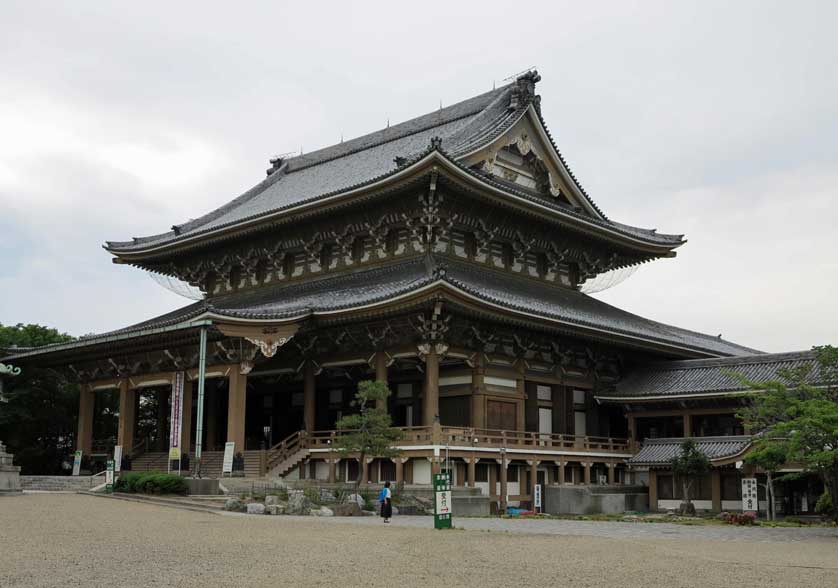
Main Hall (Hondo), Higashi Betsuin Temple, Nagoya
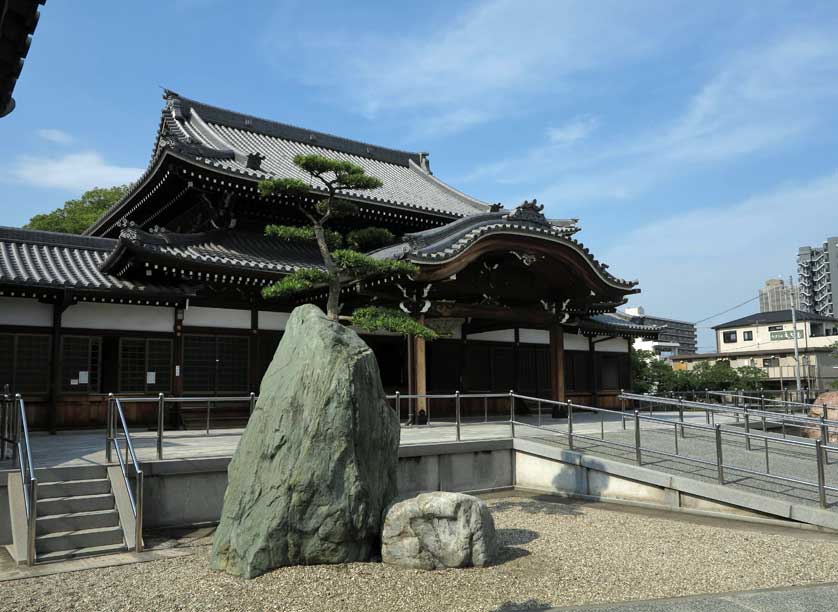
Arako Kannon Temple Main Hall, Arako, Nagoya
Unique and specialty temples
Toyokawa Inari Temple
Toyokawa Inari Temple, located about an hour from Nagoya, is one of Japan's three most famous Inari shrines. What makes it unique is that it's both a Soto Zen Buddhist temple and a Shinto shrine dedicated to Inari, the god of prosperity and harvests.
Notable aspects of Toyokawa Inari Temple include:
- Thousands of fox statues, considered messengers of Inari, scattered throughout the grounds
- A large Buddhist main hall alongside Shinto shrine structures
- The "Hill of Foxes" featuring countless small fox statues in red bibs
- Popular among visitors praying for business success and good fortune
Toyokawa Inari Temple offers a fascinating look at the syncretic nature of Japanese religious practices, where Buddhist and Shinto traditions often blend seamlessly. Its unique atmosphere and fox imagery make it a popular destination for both worshippers and tourists.
Mama Kannon Temple
Mama Kannon Temple, officially known as Ryuonji, is a unique temple that has gained popularity for its specialized focus. Known colloquially as the "Breast Temple", it attracts visitors praying for matters related to pregnancy, childbirth, and women's health.
Key features of Mama Kannon Temple include:
- Statues and imagery related to motherhood and fertility
- A history dating back to 1492, with its current focus developing in the 17th century
- Prayers and rituals specifically for safe childbirth and abundant lactation
- A peaceful atmosphere that attracts visitors from across Japan
Mama Kannon Temple represents a specialized aspect of Japanese Buddhist practice, catering to specific needs and concerns of women and families. Its unique focus makes it an interesting stop for those exploring the diverse ways in which spirituality and daily life intersect in Japanese culture.
Visiting temples and shrines in Nagoya
Etiquette and customs
When visiting temples and shrines in Nagoya, it's important to follow proper etiquette to show respect for these sacred places. Here are some key points to remember:
- Bow slightly before entering through the main gate
- At Shinto shrines, perform a purification ritual at the water fountain near the entrance
- At Buddhist temples, you may encounter incense burners where you can purify yourself with incense smoke
- When praying at a shrine, follow the "two bows, two claps, one bow" routine
- At temples, simply bow and quietly offer a prayer
- Remove your shoes when entering temple buildings, as indicated
- Speak quietly and be respectful of other visitors and worshippers
- Ask permission before taking photos, especially inside buildings
Remember that these are active places of worship, not just tourist attractions. Your respectful behavior will enhance your experience and show consideration for local customs and beliefs.
Best times to visit
The best time to visit Nagoya's temples and shrines often depends on your preferences and what you hope to experience. Here are some considerations:
- Early morning: For a serene atmosphere and to watch morning rituals
- Spring (March-May): To enjoy cherry blossoms in temple and shrine gardens
- Fall (October-November): For stunning autumn foliage
- New Year's: To experience traditional hatsumode (first shrine visit of the year)
- During festivals: Many temples and shrines host annual festivals with special events
Weekdays are generally less crowded than weekends, offering a more peaceful experience. However, some smaller temples and shrines may have limited hours on weekdays, so it's best to check in advance.
Cultural experiences (festivals, markets, etc.)
Many of Nagoya's temples and shrines offer unique cultural experiences throughout the year. Here are some notable events and activities:
- Atsuta Festival at Atsuta Shrine (June): One of Nagoya's largest festivals
- Osu Street Performers' Festival near Osu Kannon Temple (October): Showcasing various street performances
- Flea markets: Many temples host regular markets, such as Osu Kannon's on the 18th and 28th of each month
- Tea ceremonies: Some temples, like Koshoji, offer traditional tea ceremony experiences
- New Year's Eve bell ringing: Many temples allow visitors to participate in ringing the temple bell
- Setsubun (February 3): Temples and shrines host bean-throwing ceremonies to drive out evil spirits
Participating in these events can provide deeper insights into Japanese culture and traditions. Check temple and shrine websites or local event calendars to plan your visit around these special occasions.
Importance of temples and shrines in Nagoya's culture and history
Temples and shrines play a crucial role in Nagoya's cultural landscape and historical narrative. These sacred sites are not just places of worship but also repositories of art, architecture, and centuries of local history.
Historically, many of Nagoya's temples and shrines have been closely linked to the city's development. For instance, Nagoya Castle and several temples were built or relocated under the orders of Tokugawa Ieyasu, shaping the city's layout and spiritual geography. Temples like Banshoji and shrines like Atsuta Jingu have witnessed and participated in key moments of Nagoya's history, from the age of warring states to the modern era.
Culturally, these sites continue to be centers of community life. They host festivals, markets, and other events that bring locals together and attract visitors from afar. Many temples and shrines also preserve traditional arts and crafts, from calligraphy to wood carving, helping to maintain these cultural practices for future generations.
In the realm of education and preservation, places like the Atsuta Jingu Museum and the Shinpukuji Library at Osu Kannon Temple safeguard important historical artifacts and documents. These collections provide invaluable resources for scholars and offer the public glimpses into Japan's rich past.
Today, as Nagoya continues to grow as a modern metropolis, its temples and shrines serve as vital links to the past, offering spaces for reflection, cultural appreciation, and spiritual practice amid urban life. They remind residents and visitors alike of the deep cultural roots that underpin the city's identity and continue to shape its future.
